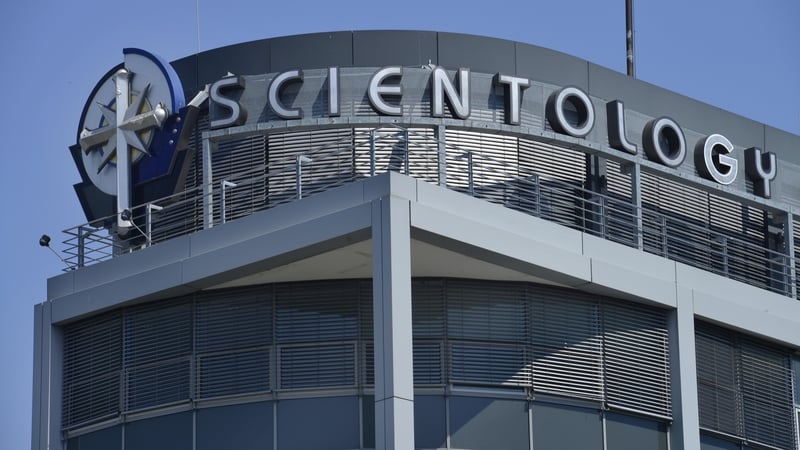Scientology has tried to make it big in Ireland before, but now it’s back, with a multi-million euro investment in three new facilities.
Source: Scientology – The Return
Scientology has tried to make it big in Ireland before, but now it’s back with a multi-million euro investment in three new facilities – one around the corner from Government Buildings in Dublin’s Merrion Square, another in the suburb of Firhouse, and a third, through its affiliated Narconon group, in Ballivor, County Meath.
It’s an expensive return, but it’s not been a popular one, and indeed, it’s been marked by controversy.
What is it about Scientology? After all, it is tiny. Though it claims a membership of millions worldwide, the available evidence suggests tens of thousands. Here in Ireland, in the last census, just 87 people said they were Scientologists. The comparator often used is, ‘Well, how many people claim to be Jedi knights?’, and in Ireland’s census, there were 2,000.
Yet, its tiny membership has not deterred Scientology. It has said its investment has been funded by donors abroad. Its return is a big effort – aside from the new facilities, its spend is on outreach, with free events, Google and mobile ads, Promoted tweets, mailshots, booklets, and leaflets through your door – all material printed at its own distribution works in Los Angeles.
Why Ireland? Well, contrary to reports, we’re nothing special. Since the start of last year, Scientology has opened over a dozen new buildings worldwide.
They follow a formula it keeps repeating: its leader, David Miscavige and committed members fly in to the openings, which are staged events. Videos of those launches are then shown at annual internal gala events, where donor members are dazzled with special Scientology statistics promoting its claim of rapid expansion. Scientology calls additions like Firhouse, ‘Ideal Organisations’, and it says that Mr Miscavige “personally supervises the selection of each new Ideal Org”.
The weekend after its Firhouse centre opened in October 2017, Scientology launched another building in Birmingham, and the weekend after that, in Amsterdam: three weekends in a row – all staged openings, off-limits to the general public.
The organisation already has a Brussels office and its European headquarters is in Copenhagen.
Journalist Tony Ortega, editor of the ‘The Underground Bunker’, has reported on Scientology for over two decades. He points out: “The new Ideal Org in Dublin is not a new European centre or headquarters, it has nothing to do with Brexit and it has nothing to do with taxes. The Church of Scientology is already tax exempt in the United States, it pays no taxes; it is not looking for new tax shelters.”
But its office in Merrion Square, opened in 2015, is one of only a few ‘National Affairs’ offices it has. “These are moves that reflect what David Miscavige has done in the United States”, Mr Ortega says. “Several years ago, Miscavige refurbished a building in Washington DC for a new ‘national affairs office’. It was a new sort of idea for Scientology – they then extended that to Ireland. And why Merrion Square? Well, because it means a lot to Scientologists, that location, because L Ron Hubbard himself had worked out of Merrion Square back in the 1950’s.”
It was at the end of 1955, and Scientology’s creator, L Ron Hubbard was already a controversial figure. He had been refused a visa renewal to the UK, where he had a base, and he had temporarily moved to Ireland to what he called “the swankiest address in Dublin”, Merrion Square.
On 17 April 1956, while he was still based there, the Director of the FBI, J Edgar Hoover, noted that in divorce proceedings, Hubbard’s second wife, Sara Northrup, had described him as “hopelessly insane”. “His recent letters have been unanswered inasmuch as he is considered obviously a mental case”, Mr Hoover wrote.
At the time, (20 April 1956) L Ron Hubbard was writing to his followers that his Merrion Square office was a “British fallback point in the event of atomic attack”.
His stay was short lived: he left within months. His organisation, Scientology, however, set up in Ireland from the 1980’s.
Mike Garde of Dialogue Ireland has followed its arrival, decline and return since then. He says that though it is small, its impact can be devastating.
“I’ve been dealing with the families of people from Malin Head to Mizen Head in this country who have been affected by this Scientology organisation”, Mike Garde says, “breakup of marriages, breakup of families – of one guy, he became addicted completely to alcohol, they tore him apart”.
It is that concern and concerns like it that led to tonight’s Prime Time: ‘Scientology – The Return’.



